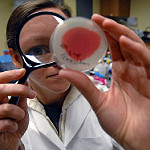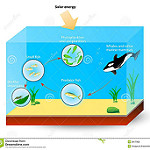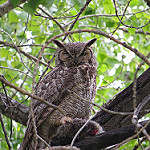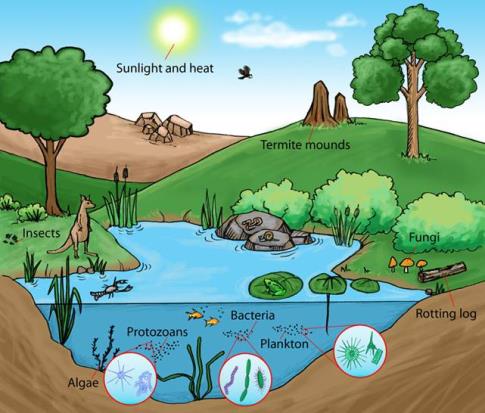Biology Q1
Section outline
-
-
Mrs. Swenson • tswenson@mountainheightsacademy.org • 435.915.6917
-
All work for each week is due at 6:00 pm on Friday. If you miss an assignment and would like to make it up, please fill out the Late Work Request Form. You can receive 80% of the total earned points.
-
All students are required to have the following: webcam, microphone, and supplies. Click for more details.
-
-
-
Start Here. Learn How to Navigate This Course.

-
-
Nature of Science

The very nature of science is discoveries, and the best of those discoveries are the ones you don't expect.~Neil deGrasse Tyson
-
Learning Objectives:
- Demonstrate understanding of the "Nature of Science."
- Science is a way of knowing that is used by many people, not just scientists.
- Understand that science investigations use a variety of methods and do not always use the
same set of procedures; understand that there is not just one "scientific method."
-
Lesson and Assignments:
-
Review:
-
Extra Credit Science Journal:
-
-
Energy Flow in Ecosystems

Land, then, is not merely soil; it is a fountain of energy flowing through a circuit of soils, plants, and animals. ~ Aldo Leopold
-
Learning Objectives:
- Arrange components of a food chain according to energy flow.
- Compare the quantity of energy in the steps of an energy pyramid.
-
Lesson and Assignments:
-
Review:
-
Extra Credit Science Journal:
-
-
Energy, Is it Worth it?

I'm not lazy, I'm energy efficient
-
Learning Objectives:
- Compare the relative energy output expended by an organism in obtaining food to the energy gained from the food.
- Describe strategies used by organisms to balance the energy expended to obtain food to the energy gained from the food.
- Research food production.
- Compare the relative energy output expended by an organism in obtaining food to the energy gained from the food.
-
Lesson and Assignments:
-
Review:
-
Test #1:
-
Extra Credit Science Journal:
-
-
Matter Cycles

The first law of Ecology is that everything is related to everything else ~ Barry Commoner
-
Learning Objectives:
- Use Diagrams to trace the movement of matter through a cycle.
- Define and give examples of limiting factors.
-
Lesson and Assignments:
-
Review:
-
Extra Credit Science Journal:
-
-
Human Impact on Matter Cycles

Of all the creatures on Earth, in proportion to their size and weight, humans have the smallest footprint on the ground and the largest on the environment. ~ R.N. Prasher
-
Learning Objectives:
- Distinguish between fact and opinion in a newspaper article related to the human impacts on matter cycles.
- Evaluate the impact of personal choices in relation to the cycling of matter within an ecosystem.
-
Lesson and Assignments:
-
Review:
-
Test #2
-
Extra Credit Science Journal:
-
-
Ecological Relationships

The important thing is to never stop questioning ~ Albert Einstein
-
Announcement: We will be using the Brine Shrimp that came with your science kit in Week 9. Make sure you have picked up your kit from the MHA office. There will not be an alternate lab, you must have the brine shrimp supplies.
-
Learning Objectives:
- Categorize relationships among living things according to predator-prey, competition, and symbiosis.
-
Lesson and Assignments:
-
Review:
-
Extra Credit Science Journal:
-
-
Ecological Communities

No one species shall make the life of the world its own. ~ Daniel Quinn
-
Announcement: We will be using the Brine Shrimp that came with your science kit in Week 9. Make sure you have picked up your kit from the MHA office. There will not be an alternate lab, you must have the brine shrimp supplies.
-
Learning Objectives:
- List factors used to determine carrying capacity for an organism.
- Explain how water is a limiting factor in various ecosystems.
-
Lesson and Assignments:
-
Review:
-
Extra Credit Science Journal:
-
-
Competition
![Heyheyuwb at English Wikipedia [GFDL (http://www.gnu.org/copyleft/fdl.html), CC-BY-SA-3.0 (http://creativecommons.org/licenses/by-sa/3.0/) or CC BY 2.5 (https://creativecommons.org/licenses/by/2.5)], via Wikimedia Commons](https://mountainheightsoer.org/pluginfile.php/3677/course/section/323/competition.jpg)
No two species will occupy the same niche and compete for exactly the same resources for an extended period of time.
-
Learning Objectives:
- Categorize relationships among living things according to predator-prey, competition, and symbiosis.
- Formulate and test a hypothesis specific to the effect of changing one variable upon another in a small ecosystem.
-
Lesson and Assignments:
-
Review:
-
-
Brine Shrimp and the Great Salt Lake

Every accomplishment starts with the decision to try.
-
Set up your brine shrimp lab on Monday or Tuesday. You will need 3 days to complete the lab.
-
Learning Objectives:
- Identify abiotic and biotic factors in an ecosystem.
- Investigate the abiotic factors in the Great Salt Lake that affect brine shrimp.
- Plan and conduct an experiment on how abiotic factors affect brine shrimp in the Great Salt Lake.
-
Lesson and Assignments:
-
-
Research

Science is wonderfully equipped to answer the question 'How?' But it gets terribly confused when you as the question 'Why?' ~Erwin Chargaff
-
Learning Objectives:
1. Research and evaluate local and global practices that affect ecosystems.
-
Lesson and Assignments:
-
Test #3
-